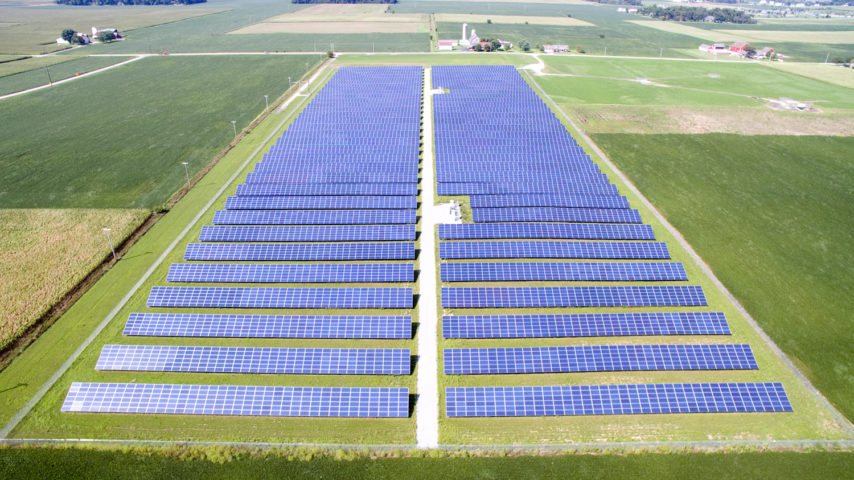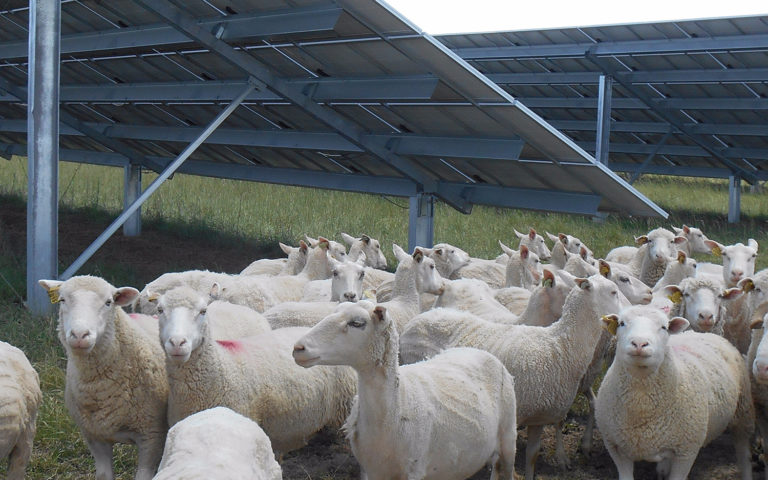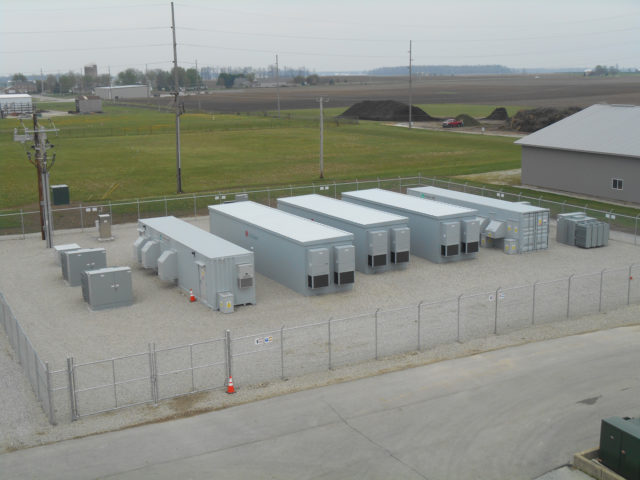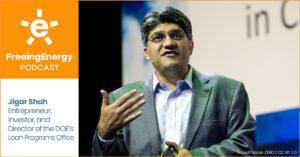
What if I told you the U.S. city blazing the local energy trail has a population of 2,800 and relies on sheep to cut the grass around its solar panels? It‘s time to turn our heads from the energy trailblazers in New York and California to the industrious and economically savvy Village of Minster, Ohio.
 In 2015, this village (Ohio calls any town with a population below 5,000 a village) became the first community of its size in the nation to successfully operate its own solar and battery system.
In 2015, this village (Ohio calls any town with a population below 5,000 a village) became the first community of its size in the nation to successfully operate its own solar and battery system.
Don Harrod is Minster’s village administrator, a big job that oversees every one of Minster’s far-reaching operations. “We are a full-service village. We supply water, wastewater, parks, streets, recreation, police, fire,” says Harrod. “We’re also a municipal-owned electric system.” Minster is one of 88 municipalities in Ohio that runs its own small electric utility – it’s what the industry calls a “muni.” Minster and other munis are in charge of procuring their own electricity, distributing it to customers, and all the while making sure it’s affordable and reliable.
 And keeping the electricity flowing is a high priority for a village that, despite its small size (of just under two square miles), is home to three electricity-intensive factories. Dannon Yogurt operates one of those factories, which just happens to be the largest yogurt-producing plant in the U.S. With three plants powering massive machinery, Minster’s peak usage days can tax even a mid-sized electric utility. A short power outage can spell millions of dollars in losses for these corporations. As Harrod says, “if we have prolonged outage, the entire U.S. east coast won’t get its yogurt.”
And keeping the electricity flowing is a high priority for a village that, despite its small size (of just under two square miles), is home to three electricity-intensive factories. Dannon Yogurt operates one of those factories, which just happens to be the largest yogurt-producing plant in the U.S. With three plants powering massive machinery, Minster’s peak usage days can tax even a mid-sized electric utility. A short power outage can spell millions of dollars in losses for these corporations. As Harrod says, “if we have prolonged outage, the entire U.S. east coast won’t get its yogurt.”
Minster seeks out cleaner energy and more predictable pricing
Minster’s energy portfolio includes full or partial ownership in hydro, coal, and natural gas plants. But their goals of cleaner energy as well as minimizing the long-term unpredictability of coal and natural gas prices motivated them to diversify their portfolio.
What they found was a best-of-all-worlds solution that many energy experts would have thought impossible. This solution promised to keep costs low, ensured higher-quality service with fewer interruptions, and allowed for predictable pricing without a hefty upfront investment. That solution was to partner with a third party and build their own local energy system—a solar energy-plus-battery field right outside the village.
GET MONTHLY NEWS & ANALYSIS
Unsubscribe anytime. We will never sell your email or spam you.
But what led Minster to consider not just solar energy—itself relatively young in the world of energy—but also batteries, which are practically industry newborns?
“We were thinking that solar…would save us on [traditional power] costs that we have seen increasing each year,” says Harrod. And unlike their previous energy ventures that they financed themselves, Harrod and his fellow municipal leaders decided to seek out a partner to help offset the upfront investment.
The battery part of the story came about when Ohio Senate Bill 310 put the state’s renewable energy plans on hold for a two-year review. All of a sudden, solar plants were a less attractive investment. The repercussions were swift.
“All the investors that the developer was talking to about investing in the project said, ‘Wait a minute. We can’t make this work.’ … So, everybody was backing down,” recalls Harrod.
Forced back to the drawing board, Harrod and his team brainstormed alternate approaches. To add investor appeal to Minster’s solar initiatives, municipal leaders landed on the idea of adding an energy storage system to their solar plant. These batteries would allow them to utilize every bit of the low-cost solar energy they create and, most importantly, sell some battery-based services back to the regional grid. That was enough to pique the interest of Half Moon Ventures, which signed on as Minster’s partner to help finance and build this first-of-a-kind system.
Building Minster’s solar-plus-battery system

But where to put 13,600 new solar panels? Minster chose the perfect plot of land: a 17-acre field they already owned that is home to the wells that provide the village’s water. The property isn’t suitable for agriculture, so building a solar farm there was an ideal solution.

That’s where those sheep come in. Not only did the village save money by repurposing this unused parcel of land, but it’s also poised to save on maintenance costs after Minster partnered with a local farmer. “He put sheep out on the solar field to basically mow it for us. The sheep are out there eating the grass, eating the weeds, keeping it down for us,” explains Harrod of this remarkably simple lawn care strategy.

Minster’s solar-plus-storage system provides a quarter of the village’s electricity needs right in its own backyard. Best of all, the electricity is cleaner and more reliable. And, thanks to their new battery, they are able to sell services back to the regional grid. Amazingly, by adding in this novel revenue stream, the net cost to Minster is lower than what they pay for their natural gas and coal-powered electricity.
The economics of Minster’s local energy solution
Using some of the lingo from the power industry, Harrod explains, “Last year alone with the solar, we saved $120,000 in transmission charges. We’re also doing revenue stacking. We’re selling into the PJM frequency regulation market. We are peak shaving to lower our wholesale rates. We’re also getting power factor correction from the inverters on the batteries.”
Putting this in regular English, Harrod, and Minster have been able to save money by not paying to long-haul electricity from a distant power plant and by cutting the amount of electricity they use during the peak consumption periods. Even better, they are actually generating revenue by using the batteries to create services that the regional grid, PJM, is happy to pay for.
Because battery-based systems are so flexible, Minster was able to avoid some costly upgrades to their previous village grid. “We were going to invest about $350,000 in capacitors. The batteries and the inverters on the batteries do the same thing as the capacitors would do. So by going to the energy storage, we were able to avoid having that $350,00 cost of buying those capacitors.”
Expanding the system and becoming a microgrid
As for the future of Minster’s solar plans, the outlook is sunny. What I’ve described thus far is the first of Harrod’s three-phase plan. Phase two aims to replicate the first phase as an indirect energy storage system exclusively for Dannon, which is building a 285,000-square-foot, $25 million distribution center in Minster.
For phase three, Harrod told me “the council has agreed to negotiate a land deal with Half Moon to put another 19 megawatts of energy storage onto the village’s system. What we’d like to do is be able to create our own microgrid to provide us power for a period of time if we ever go off of the grid.”
A microgrid built on Minster’s existing solar and battery system will power the village even when the regional grid is offline. Microgrids are the best example of local energy: they are incredibly reliable, and can also be cleaner and cheaper. Many experts believe that the future of the grid will look like a huge set of interconnected microgrids – like an internet of energy. In any case, the microgrid gives Minster the ultimate control over its own electricity.
The goal is to complete these three phases in the next four to five years—an aggressive goal, but one I have no doubt Minster can realize.
I’m excited to follow Minster’s progress as it continues to prove the viability and economic advantages of implementing municipal scale solar-plus-storage solutions in 2017 and beyond. I have a strong feeling the rest of the world will soon follow in the footsteps of this forward-thinking and industrious village (and their hardworking sheep).







5 Responses
Reblogged this on Antinuclear.
I’m sharing this with my friends in Minster. Something about the people in that town that always draws me back.
may I ask what an energy bill is for a resident of Minster, this is just brilliant
I’m afraid I don’t know their precise electric bills.
I live in minster. I have a family of 4 and with all their electronics (PlayStation, Xbox, tvs, lights, stove, ect) even in the summer with a/c running non stop I have never had a bill over 125$ a month.